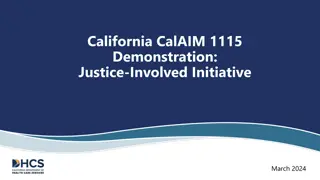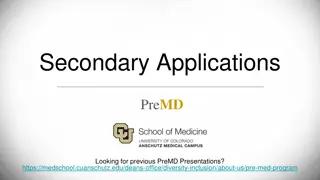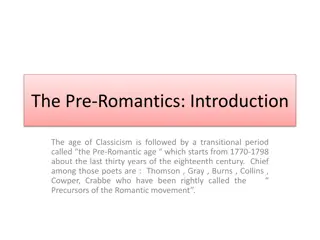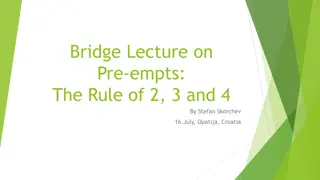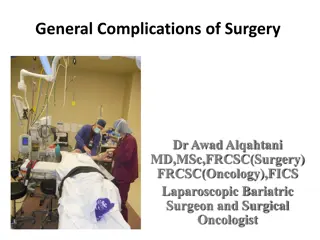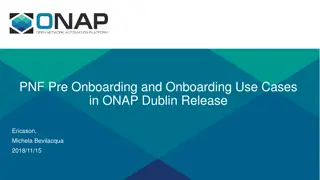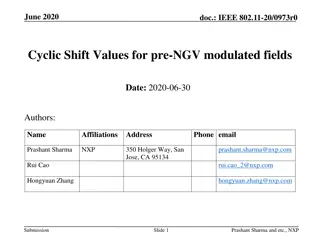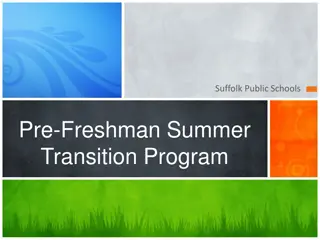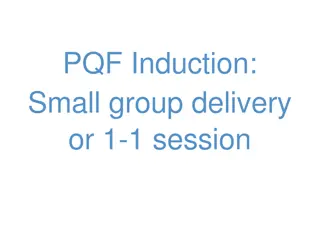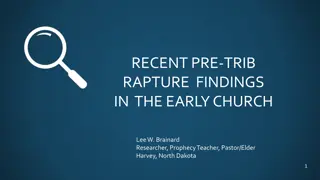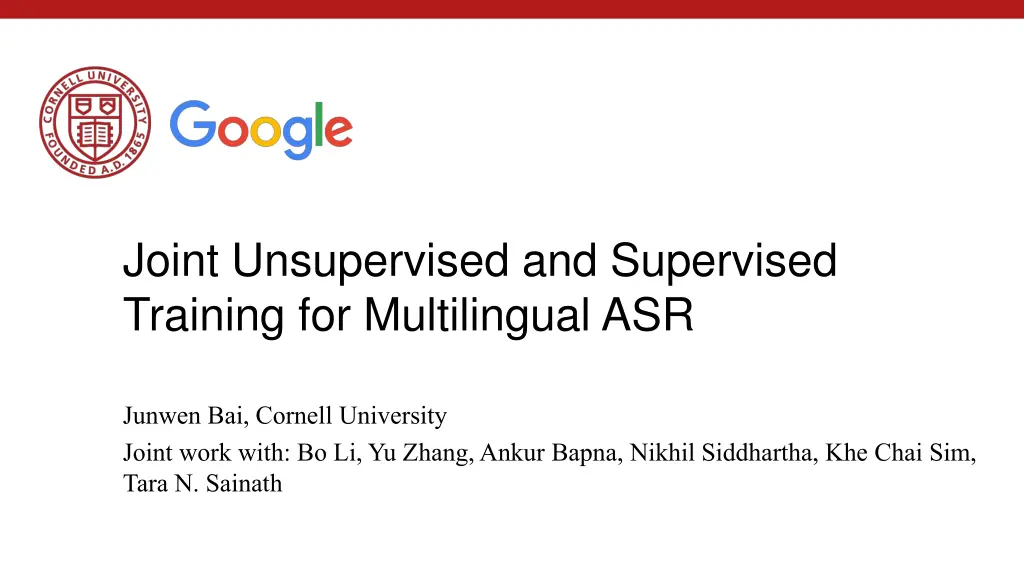
Efficient Multilingual ASR Training Strategies
Explore joint unsupervised and supervised training methods for multilingual ASR to enhance recognition performance on low-resource languages, simplify deployment processes, and support code-switching. Discover existing multilingual ASR corpora like IARPA Babel Program, VoxForge, and CommonVoice, along with the benefits of Multilingual LibriSpeech (MLS) in training ASR models for multiple languages.
Download Presentation

Please find below an Image/Link to download the presentation.
The content on the website is provided AS IS for your information and personal use only. It may not be sold, licensed, or shared on other websites without obtaining consent from the author. If you encounter any issues during the download, it is possible that the publisher has removed the file from their server.
You are allowed to download the files provided on this website for personal or commercial use, subject to the condition that they are used lawfully. All files are the property of their respective owners.
The content on the website is provided AS IS for your information and personal use only. It may not be sold, licensed, or shared on other websites without obtaining consent from the author.
E N D
Presentation Transcript
Joint Unsupervised and Supervised Training for Multilingual ASR Junwen Bai, Cornell University Joint work with: Bo Li, Yu Zhang, Ankur Bapna, Nikhil Siddhartha, Khe Chai Sim, Tara N. Sainath
Multilingual ASR Multilingual ASR Concerned with dealing with multiple languages with one model In a production setting Training, deploying and maintaining one model per language, especially on long tail of low-resource languages, can quickly become cumbersome as the number of languages increases A single model for all languages can simplify the production pipeline significantly Training multilingual ASR models on a small set of similar languages can improve recognition performance Support the use case of code-switching Goal: A single E2E model for multiple languages Improve automatic speech recognition (ASR) performance on low-resource languages Overall simplify deployment of ASR systems to support diverse languages
Existing Multilingual ASR corpus Existing Multilingual ASR corpus IARPA Babel Program 24 languages, from conversational telephone speech labeled data range from 25 to 65 hours per language not released (public) VoxForge 15 different languages remains low-scale (300h in total) (public) CommonVoice more than 30 languages In total with 4500h so far (In-house) VoiceSearch 15 languages from 9 distinct language families 360k hours in total Even the smallest language, Malay, has 7.6k hours
Multilingual Multilingual LibriSpeech LibriSpeech (MLS) (MLS) Monolingual LibriSpeech derived from the LibriVox data ships with about 1000 hours of labeled audio, obtained by leveraging alignments between textbooks and their read (audio) counterpart A great success as a standard, freely available ASR benchmark LibriVox top 15 languages
Multilingual Multilingual LibriSpeech LibriSpeech (MLS) (MLS) While English is the most dominant language in LibriVox, there is a significant amount of audio hours present for other languages MLS selects English(en), German(de), Dutch(nl), Spanish(es), French(fr), Portuguese(pt), Italian(it), Polish(pl) Based on the number of audiobook hours and the availability of the corresponding text sources All the audio data is downsampled from 48kHz to 16kHz for further processing
Multilingual Multilingual LibriSpeech LibriSpeech (MLS) (MLS) English has up to 44.6k hrs Portuguese and Polish only have as low as ~100 hrs
Prior works Prior works Train an ASR model for each language Monolingual Baseline WER with different decoding strategies using wav2letter++ * Low-resource languages have very bad WERs * Pratap et al., MLS: A Large-Scale Multilingual Dataset for Speech Research , InterSpeech, 2020
Prior works Prior works Cross-Lingual Speech Recognition (XLSR)* 2-stage pretrain+finetune framework based on wav2vec2 A shared quantization module over feature encoder representations produces multilingual quantized speech units/tokens embeddings are then used as targets in contrastive learning * Conneau et al., Unsupervised cross-lingual representation learning for speech recognition , 2020
Prior works Prior works Decoder Transfer learning xN Block 3 Conformer Layer Trained on VoiceSearch and then transferred to MLS projection Block 2 Conformer Layer An attention-based encoder-decoder model Using GShard, an elegant way to express a wide range of parallel computation patterns with minimal changes Time stacking layer x4 Block 1 Conformer Layer Position embedding Input projection Input Features * Li et al., Scaling end-to-end models for large-scale multilingual ASR , ASRU, 2021
Joint Unsupervised and Supervised Training Joint Unsupervised and Supervised Training Concerns for pretrain+finetune catastrophic forgetting The model might forget the previously learnt knowledge pretrained checkpoint selection The downstream performance varies from one checkpoint to another The one pretrained longer is not necessarily the best one Different languages are often heterogeneous and the corpus is often imbalanced We propose to train the model with both supervised and self-supervised losses jointly Reconcile the gradients provided by both types of losses Mutually regularize each other Unsupervised losses Contrastive loss Masked language model (MLM) loss Supervised loss RNN-T
JUST JUST Feature encoder Conv downsample 2 Convolutional layers Extract latent representations from the surface features (log-mel filter bank) Quantization Encoded features are passed to a quantizer without masking Quantizer summarizes" all the latent speech representations to a finite set (codebook) of representative discriminative speech tokens Output both the quantized token + token ID Target Discretized IDs Context Vectors Linear Masking Quantization Feature Encoder Convolutional subsampling Encoded Features Input Features
JUST JUST objective Decoder Contrastive Module A stack of Conformer blocks Read the encoded features with masking Extract context vectors from feature encoder output for computing the w2v2 contrastive loss MLM Module From w2v-bert* Continue to extract context vectors (from the contrastive module s output) for computing the MLM loss Cross-entropy with ground-truth token IDs Context Vectors RNN-T loss MLM Module Conformer Block ... MLM Loss Conformer Block Context Vectors Contrastive Loss Conformer Block Contrastive Module ... Target Discretized IDs Conformer Block Context Vectors Linear Masking Quantization Decoder Module 2-layer LSTM RNN-T loss Feature Encoder Convolutional subsampling Encoded Features Diversity Loss * Chung et al., W2v-bert: Combining contrastive learning and masked language modeling for self-supervised speech pre-training , 2021 Input Features Final JUST loss = ??+ ? (??+ ??+ 0.1 ??)
Multilingual Multilingual LibriSpeech LibriSpeech (MLS) (MLS) On average WER of all 8 languages, all JUST-based methods outperform previous works. In particular, JUST (with =0.07) outperforms the monolingual baseline with 5-gram LM by 33.3%, XLSR-53 by 32.0%, B0 by 18.2%, E3 by 8.8%
Per Language Per Language B0 vs JUST JUST ( =0) vs JUST E3 vs JUST
Attention Attention We compare two attention mechanisms for JUST from scratch: a local attention mechanism with both left and right context 128 a global attention mechanism with full context Global attention clearly outperforms local attention on all languages
Codebook Codebook Original w2v2 doesn't update codebook in the finetuning phase. JUST finetuning, however, keeps the unsupervised loss and could further update the codebook We compare the performance with learnable or fixed codebook during JUST finetuning Their results are close This implies that fixing codebook in JUST finetuning would not degrade the performance
Take Take- -aways aways When the task is known, self-supervision can still further boost the performance when combined with supervision Joint training can reconcile the self-supervised signals and supervised signals, especially in the complex task like multilingual ASR
Q & A Q & A Thanks for listening!





